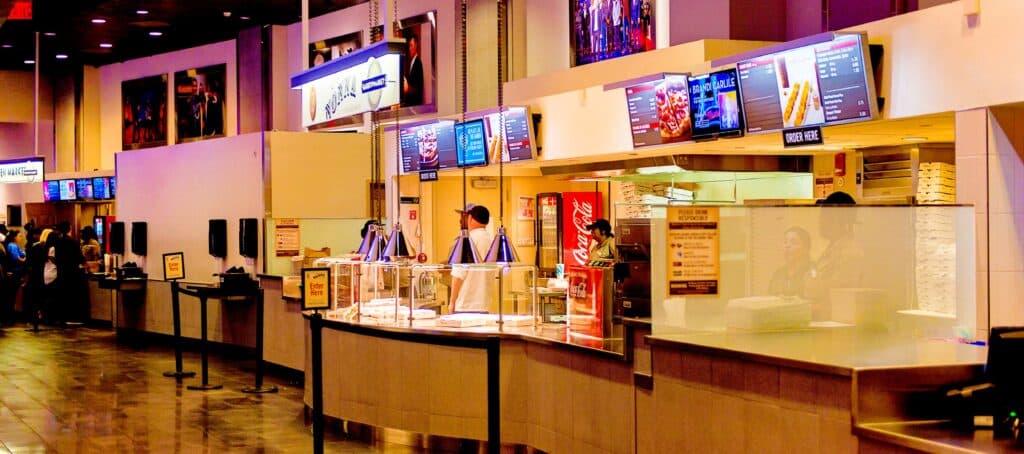Reduce Stadium Foodservice Challenges With Garbage Grinder Alternative
Stadiums and sports arenas across the country attract large crowds to enjoy their favorite forms of entertainment throughout the year. Whether it’s a sporting event, concert, or other performance, thousands flock to these sold out events.
With these events lasting several hours, your guests are going to want refreshments.
Many sporting events have vendors in the stands offering smaller snacks, but for guests who want bigger portions, they will either visit your concessions stand or an actual sit-down restaurant in some of the higher end arenas.
When stadiums began adding luxury boxes and club levels, they began targeting premium foodservice to match. And as foodie culture intensified over the last decade, the pace only accelerated.
Guests who are paying top dollars for their tickets have come to expect more than just a hot dog and a beer.
Stadiums are now employing executive chefs, mixologists, and pastry artisans to create environments that deliver both convenience and social interaction and serve inventive, locally inspired cuisine that’s more often associated with upscale restaurants than bleachers.
This greater demand for full on-site cooking at stadium point-of-sale locations requires commercial kitchen equipment that includes ovens, grills and fryers incorporating ventilation hoods. Portable equipment, like carts and kiosks also play critical roles along with hand sinks, induction units and ventless hoods.
People eat with their eyes and nose first, so it’s important to create a stadium with great smells by cooking as many things fresh to order as possible.
In years past, much of a stadium’s culinary creativity and operational capacity was largely limited by infrastructure. But newer stadiums and arenas now have high-powered kitchens with hoods, grills, and fryers. Even older stadiums have incorporated ventless hoods to bring cooking capabilities to once-ignored stadium corners.
Older stadiums might have had one cashier for every 1,000 fans. These days, that ratio is trending toward one-to-100. By increasing points of service, stadiums boost convenience and speed for fans, which helps generate higher sales.
Concession stands are compacted in both space and serve time. Preventing problems in your stadium’s commercial kitchen is one of the key building blocks of a successful business.
Tight concourses and large crowds make it prohibitive to rely on one central kitchen to back up all the concession stands.
Whenever there is a break in the entertainment, guests will take a bathroom break and grab something to eat. This means everything must be in place and ready to go at the drop of a hat.
Success during a busy half time rush is as much about quick execution and speed of service as it is keeping current with menu trends.
Since most of your ticket holders aren’t in a luxury suite, handheld food items work better than those requiring utensils. Concessionaires are targeting a price point that allows them to serve the best-quality product. That’s what the customer really wants.
Efficient foodservice in an arena prevents long, frustrating lines and keeps guests in their seats so they never miss an important play. This reduces the dependency on labor and streamlines operations.
The event-driven nature of stadium foodservice makes staffing and managing inventory the biggest challenges. With a limited number of events each year, your revenues are dependent on less dates than a typical commercial kitchen. This makes it challenging to recruit staff looking for a longer-term commitment. You’re constantly training people who end up leaving.
Food safety is another challenging problem in stadiums and arenas due to the number of guests expecting a good dining experience in a short period of time. There’s also the added difficulty in training a workforce with high-turnover, and the inherent openness of stadiums and public venues that make it easier for pests to make their way into kitchens.
The last thing you want to add on top of these existing stadium foodservice challenges are any potential plumbing problems in this already stressful environment.
The greasy nature of concession stand foods makes your grease trap and garbage grinder have to work even harder. If cold water is accidentally run instead of hot, it can clog your drains before hitting the grease trap.
Leaks or other plumbing mishaps can close your concession stand during an event, losing out on one of your limited opportunities to generate revenue. If there is a problem, it’s not going to be easy to get a plumber inside the stadium in the middle of a sporting event.
Avoid Plumbing Problems With Our Garbage Grinder Alternative
The Drain Strainer™ can help you avoid issues with what gets put down your drains. No matter how much you focus on employee training, short cuts are always going to be taken and items are going to be put down your arena’s garbage grinder that can harm it.
If you want to avoid issues with garbage grinders that are leaking or have burned out motors, The Drain Strainer™ is an effective and affordable commercial disposal alternative.
Invented by a former restaurant owner, The Drain Strainer™ can eliminate issues with mangled silverware or dangers from employees putting their hands down the commercial garbage disposal trying to clear out a clog.
Click here to find out more about how our product can keep your stadium’s restaurants and concession stands running smoothly.

